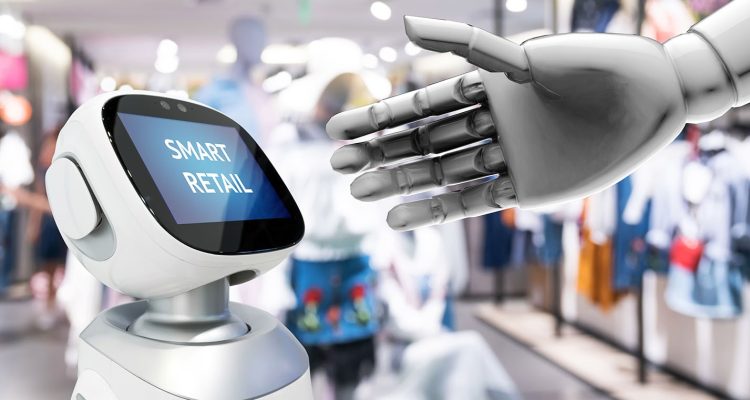Introduction: The Rise of AI in the Retail Sector and Its Impact on Consumers
Artificial Intelligence (AI) is no longer just a futuristic concept; it has become a driving force in revolutionizing industries across the globe, particularly in retail. Over the past decade, AI has increasingly been integrated into various aspects of the shopping experience, from personalized recommendations to optimizing inventory management. As retailers face rising consumer expectations and a competitive market, AI offers the tools to meet demand efficiently, enhance customer satisfaction, and create more seamless, engaging shopping experiences.
The impact of AI in retail extends far beyond behind-the-scenes operations. It is fundamentally changing how consumers shop and how brands interact with them. AI is helping brands personalize offerings, streamline store experiences, predict consumer behavior, and ensure that customers have exactly what they need when they need it. The rise of AI-powered tools and platforms is shaping a new era in which intelligent technology enhances every step of the consumer journey, from browsing to purchase.
In this article, we’ll dive into some of the key applications of AI in retail, including personalized recommendations, inventory management, checkout-free stores, and consumer insights, while examining how this technology is reshaping both the customer experience and the retail landscape as a whole.
AI-Powered Recommendation Systems: Personalizing Shopping Experiences for Individual Preferences
One of the most significant ways AI is transforming retail is through the use of AI-powered recommendation systems. These systems are designed to analyze vast amounts of data—such as browsing history, previous purchases, and product interactions—to predict and suggest items that align with an individual’s tastes and preferences. Retail giants like Amazon, Netflix, and Spotify have already mastered the art of personalized recommendations, and now this technology is spreading across various retail channels, including online and in-store experiences.
AI recommendation systems work by leveraging machine learning (ML) algorithms to identify patterns in consumer behavior. For example, if a customer frequently buys fitness-related items, AI can suggest new workout gear, supplements, or even subscription services like fitness apps. Additionally, these systems consider contextual factors such as time of day, seasonality, and even social trends, further refining the suggestions to ensure they’re timely and relevant.
In e-commerce, personalized recommendations are typically seen in the form of “Customers who bought this also bought…” or “You might also like” suggestions. These systems use collaborative filtering and content-based filtering methods, combining both a user’s unique preferences and collective trends from other consumers. As consumers are presented with products they’re more likely to be interested in, brands see increased engagement and conversion rates.
AI recommendations also extend to physical stores. In brick-and-mortar settings, AI can help create personalized shopping experiences by analyzing customers’ interactions with digital kiosks or smart mirrors. For instance, customers can receive personalized clothing suggestions based on their preferences, past purchases, or even on the spot through interactive tech that identifies their style.

AI for Inventory and Supply Chain Management: Optimizing Logistics and Inventory
Beyond enhancing customer-facing experiences, AI is transforming the way retailers manage their inventory and supply chain. Traditionally, managing stock levels has been a complex process, requiring detailed forecasts and manual tracking. However, with AI tools, retailers can automate and optimize their supply chain operations in real-time, improving efficiency, reducing costs, and enhancing product availability.
AI-driven systems can predict demand more accurately by analyzing historical sales data, market trends, weather patterns, and even social media activity. These systems help retailers anticipate fluctuations in demand and adjust inventory levels accordingly. For example, if a retailer knows that a certain product will be in higher demand due to an upcoming holiday or event, AI can suggest increasing stock to meet the surge in consumer interest.
AI-powered demand forecasting is also improving logistics by determining the optimal routes and timing for product deliveries. AI systems can predict potential disruptions in supply chains, such as transportation delays or supplier issues, and recommend alternative strategies for fulfilling orders. By automating the procurement process and aligning stock levels with expected demand, retailers can significantly reduce excess inventory, lower storage costs, and minimize out-of-stock situations.
Another area where AI is making an impact is in the use of robots and drones for inventory management in warehouses. These AI-driven robots can scan shelves, track product levels, and even restock items, creating more efficient operations and freeing up employees to focus on other critical tasks.
Checkout-Free Stores: The Role of AI in Cashier-Less Shopping Experiences
The concept of checkout-free stores is one of the most exciting innovations in AI and retail. In traditional shopping environments, customers are accustomed to scanning items, checking out at registers, and waiting in line. However, with AI and computer vision technology, retailers are now offering cashier-less experiences that allow customers to simply walk in, pick up what they need, and leave without going through a traditional checkout process.
A pioneer in this space is Amazon Go, a revolutionary concept that uses AI-powered cameras and sensors to track what items customers pick up. When a customer enters the store, they scan the Amazon Go app, and as they shop, the system continuously tracks their purchases using computer vision and sensor fusion technology. Once they’re done, customers simply walk out, and their accounts are automatically charged for the items they’ve taken. No checkout lines, no cashiers, just a seamless experience.
AI is also being utilized in smart shelves and smart carts in physical stores. For example, Walmart has been experimenting with AI-powered carts that track the products being added and automatically calculate the total price as customers move through the store. These technologies not only provide convenience but also help retailers reduce labor costs, improve efficiency, and enhance the overall shopping experience.
AI and Customer Insights: Using AI to Understand and Predict Consumer Behavior
AI is also playing a pivotal role in helping retailers understand and predict consumer behavior. By analyzing vast amounts of data from online browsing, transaction history, social media, and even in-store interactions, AI provides retailers with a deeper understanding of consumer preferences, motivations, and purchasing habits.
With predictive analytics, AI can identify patterns in consumer behavior and anticipate future actions. For example, if a customer frequently purchases skincare products, AI can predict when they might need to restock, enabling brands to target them with timely reminders or special promotions. In addition, AI can segment customers based on their buying habits and provide retailers with insights to develop more targeted marketing campaigns.
AI is also being used to personalize the customer journey by delivering tailored content at every touchpoint, whether through personalized emails, product recommendations, or customized ads. By delivering the right message at the right time, AI increases the chances of conversion and enhances the overall customer experience.
AI tools can even be used to detect customer sentiment. By analyzing customer reviews, social media comments, and feedback, AI can help brands understand how consumers feel about their products and services, identify pain points, and make improvements in real-time.
Conclusion: How AI Will Continue to Innovate the Retail Landscape
AI is undoubtedly transforming the retail landscape, creating smarter, more personalized shopping experiences while simultaneously optimizing behind-the-scenes operations. From product recommendations and inventory management to checkout-free stores and predictive analytics, AI is driving the next wave of innovation in retail.
As AI technology continues to evolve, retailers will have even more opportunities to enhance customer engagement, streamline operations, and create more efficient business models. The shift toward AI in retail isn’t just about improving customer satisfaction—it’s about rethinking the entire shopping experience, from product discovery to delivery.
However, as AI becomes more ingrained in retail, it’s essential for retailers to remain mindful of ethical considerations, including data privacy and security. With AI systems collecting vast amounts of personal data to offer personalized experiences, brands must ensure transparency and provide customers with control over how their data is used.
Ultimately, the future of retail will be defined by intelligent technology that not only meets the needs of the modern consumer but anticipates them. As AI continues to evolve, it will reshape how we shop, interact with brands, and experience the world of commerce.












































Discussion about this post